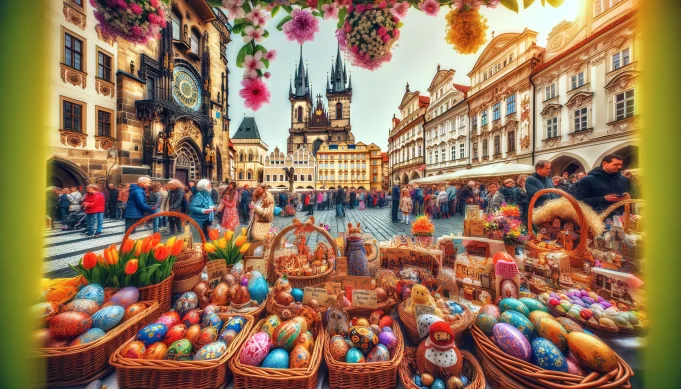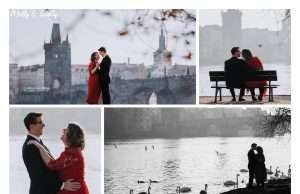Introduction
Prague, the capital of the Czech Republic, is more than just a stunning city with a picturesque skyline dominated by spires and a historic castle. Its importance in history is profound, stemming from its geographical location at the heart of Europe, which has made it a crossroads for various cultures, armies, and ideas throughout the centuries. This article delves into why Prague is not just a heart of beauty, but also a cornerstone of European history.
Prague’s Early Beginnings
The origins of Prague trace back over a thousand years, with its establishment often shrouded in legend—specifically the prophecy of Libuše, a mythical ancestor of the Czech people. Historically, Prague began to emerge as a significant settlement in the 9th century. By the Middle Ages, it was already a bustling metropolis, serving as the seat of kings and a vital trade hub. The city’s early significance was marked by the founding of Prague Castle, around which the city developed.
Architectural Landmarks and Their Historical Roles
Prague Castle: A Symbol of Czech Statehood Prague Castle has been the political heart of the region for centuries, embodying the Czech state’s continuity. Its walls have witnessed coronations, strategic decisions, and, in recent times, serve as the presidential residence.
Charles Bridge: Connection and Conflict The Charles Bridge, iconic with its series of statues, has connected Prague’s Old Town with the Lesser Town since the 14th century. It has seen countless historical events, including battles and parades, playing a key role in the city’s defense and its religious and cultural life.
The Astronomical Clock: Innovation and Ingenuity The Old Town Hall’s Astronomical Clock, installed in 1410, is one of the oldest clocks of its kind still operating. It reflects Prague’s historical role in the fields of astronomy and timekeeping, symbolizing the city’s long-standing focus on science and education.
Prague during the Renaissance and Baroque Periods
The Renaissance era brought a flowering of art and architecture to Prague, much of it influenced by the Holy Roman Emperor Rudolf II, who made the city his home. This period saw the city become a center for Renaissance art and thought. The Baroque period followed, imbuing the city with an architectural grandeur seen in its churches and palaces, epitomized by the St. Nicholas Church.
Prague’s Role in European Wars
The Thirty Years’ War: Its Effects on Prague The Thirty Years’ War profoundly impacted Prague, starting with the Defenestration of Prague in 1618, which was a catalyst for the conflict. The war altered the city’s demographic and religious landscape significantly.
Prague during World War II: Resistance and Revival During World War II, Prague was a focal point of the Nazi occupation, which led to significant resistance movements within the city. Post-war, Prague’s revival was marked by efforts to restore its historic architecture and cultural heritage that had suffered during the occupation.
The Velvet Revolution and Modern Era
The Velvet Revolution in 1989 stands out as a pivotal moment in Prague’s recent history. This peaceful coup ended communist rule in Czechoslovakia, showcasing Prague as a symbol of resistance and change. The city’s transformation into a vibrant, democratic capital has made it a model of transition in post-Communist Eastern Europe.
Prague in Literature and the Arts
Prague has inspired countless artists and writers, from Kafka to Kundera, who have immortalized its enigmatic beauty and atmospheric streets in their works. The city’s historical ambiance and cultural depth make it a perennial muse for creative minds.
Educational and Intellectual Contributions
Charles University: A Beacon of Learning and Liberal Thought Founded in 1348, Charles University is one of the oldest universities in the world. It has been a center of scholarship and dissent, playing a crucial role in the development of educational and intellectual movements across Europe.
Prague as a Tourist Destination
Prague’s rich history not only fills the pages of textbooks but also the itineraries of millions of tourists each year. The city’s blend of Gothic, Renaissance, Baroque, and Art Nouveau architecture attracts visitors worldwide, eager to walk through history.
Prague’s Cultural Legacy
Prague’s cultural traditions, from its celebrated Christmas markets to its classical music heritage, are steeped in history. Annual festivals and events continue to celebrate this legacy, drawing on centuries-old traditions to enrich the modern cultural landscape.
Challenges and Preservation of Historical Heritage
As Prague faces the challenges of modernization and mass tourism, preserving its vast architectural and cultural heritage is increasingly crucial. Initiatives aimed at protecting and maintaining the city’s historic sites are vital for sustaining its identity and historical integrity.
Why Prague Matters Today
Prague remains a key player on the European stage, its history informing its role in contemporary politics and culture. The lessons gleaned from its rich past continue to influence its approach to current challenges and opportunities.
Conclusion
The historical importance of Prague is as diverse as it is deep. This city, with its enduring beauty and complex past, offers a window into the soul of Europe. Its story is a compelling reminder of how history shapes the present and the future, ensuring Prague’s relevance for generations to come.
FAQs
What role did Prague play in the development of Europe’s intellectual history? How did World War II affect Prague’s cultural heritage? What are some must-see historical sites in Prague? Why is Prague considered a key city in Renaissance history? How does Prague’s historical architecture influence its modern-day character? What can other cities learn from Prague’s approach to historical preservation?











I was thoroughly impressed by this comprehensive exploration of Prague’s history. The article does an excellent job of weaving together the city’s early beginnings, its role in European wars, and its cultural contributions over the centuries. The sections on Prague’s Renaissance and Baroque periods are particularly fascinating, highlighting the city’s transformation into a hub of art and architecture. The inclusion of FAQs at the end is a nice touch, addressing common questions and sparking further curiosity. Overall, this article offers a well-rounded perspective on why Prague holds such a pivotal place in Europe’s cultural tapestry. Highly recommended for anyone interested in history, culture, or travel!
This article is a captivating journey through Prague’s rich history, painting a vivid picture of a city that stands as a testament to Europe’s cultural and political heritage. From its mythical beginnings to its pivotal role in European wars and revolutions, the narrative is both informative and engaging. The descriptions of Prague’s architectural landmarks are particularly insightful, offering a deeper understanding of their historical significance. The article also touches upon Prague’s influence on literature, arts, and intellectual thought, showcasing its enduring impact on European culture. Whether you’re planning a trip to Prague or simply interested in European history, this article is a must-read!